This is the town we visited to see the Easter Market. The alte stadt (old town), Kloster (cloister) and gardens were as fascinating as the eggs were beautiful.
Normally, the kloster is now a museum. It has ancient artifacts, paintings and all kinds of historical stuff that Randy and I find interesting.
The beautiful plasterwork ceiling in one of the rooms.
The windows in the room looked like the decorated eggs!
Seligenstadt is famous for it's embroidery, lace, beadwork and textiles.
Immigration into Germany is nothing new: in 1947 people from all over Europe were moving into Germany. Randy suggested putting a really BIG red arrow with "Syrien" on it on this map.

Read and hear more at http://www.npr.org/2012/05/31/153943491/stumbling-upon-miniature-memorials-to-nazi-victims
Normally, the kloster is now a museum. It has ancient artifacts, paintings and all kinds of historical stuff that Randy and I find interesting.
Roman coins found in Seligenstadt : it was one fort on the Roman Limes road, the fortified northern most 'limit' of the Roman empire in the 1st century AD
Paintings of the town and countryside
The beautiful plasterwork ceiling in one of the rooms.
The windows in the room looked like the decorated eggs!
Seligenstadt is famous for it's embroidery, lace, beadwork and textiles.
Immigration into Germany is nothing new: in 1947 people from all over Europe were moving into Germany. Randy suggested putting a really BIG red arrow with "Syrien" on it on this map.
Pilgrims, both Cistercians from the north, and Benedictines who built the basilica, passed through Seligenstadt
This is for Maggie.
The whole old town is full of half-timbered buldings
The body parts on the back right were offerings given by the faithful in thanks for healings
I liked this baby Jesus in a beaded box.
Beautiful quilling inside a carved box
One inch high silver musicians
Michael victorious over the dragon.
This portrait reminded me of a self-portrait Doug did of himself back in school
More herbs than I have ever seen in one garden
Each tree is a different variety
These are OLD fruit trees, cut back each year so they are, at most, 3-4 feet tall.
The entire surrounding wall is lined with Espaliers, trees trained to be two-dimensional, taking less space and benefiting from the warmth of the walls.
Looking out into the cemetary
Mandel: Almond
The car ferry crossing the Main river
Old wood cut of the basilica and the gardens, which haven't changed
Weihnachten (Christmas) decorations still up
Senior office missionaries from the Frankfurt Germany mission
Stolperstein or "Stumble stones" mark the location of homes of Jews and others forcibly removed and often killed by the Nazi regime.

Guenther Demnig is the artist and sculptor behind the stumbling stones. Here, he installs new bricks in Berlin. He says formal memorials are too abstract. Not so with the stumbling stones. "Suddenly they are there, right outside your front door, at your feet, in front of you," he says.
I love that a 600 year old home is now a "Trend Store."
I like that they left Mary there on the wall
Here they replaced the waddle and daub between the timbers with glass: I like the blending of old and new.
Easter is a BIG DEAL in Germany
We split a doner for an early dinner. Very fresh and delicious.
Turkish immigrants in Berlin developed a version to suit German tastes; this regional variation has become one of Germany's most popular fast food dishes. Annual sales in Germany amount to €2.5 billion.[38] Veal, chicken, and becoming increasingly more popular, turkey ("Truthahn"), are widely used instead of lamb, particularly by vendors with large ethnic German customer bases, for whom lamb is traditionally less preferred.
Typically, along with the meat, a salad consisting of chopped lettuce, cabbage, onions, cucumber, and tomatoes is offered, as well as a choice of sauces like hot sauce, herb sauce, garlic sauce, or yogurt sauce. The filling is served in a thick flatbread that is usually toasted or warmed. A German variety of döner presentation is achieved by placing the döner meat and the add-ons on alahmacun and then rolling the ingredients inside the dough into a tube that is eaten out of a wrapping of usually aluminum foil, sometimes called "Turkish Pizza". When plain dough is used instead of Lahmacun the rolled fast food is called "Dürüm Döner" or "Yufka Döner."
Tarkan Taşyumruk, president of the Association of Turkish Döner Producers in Europe (ATDID), provided information in 2010 that, every day, more than 400 tonnes of döner kebab meat is produced in Germany by around 350 firms.
This is the name of the owner of the Doneria in calligraphy.

















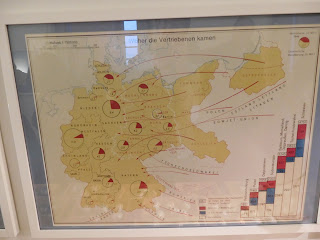
























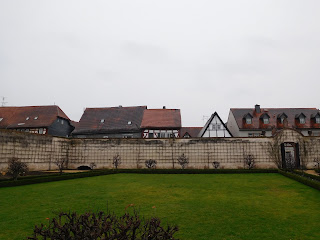




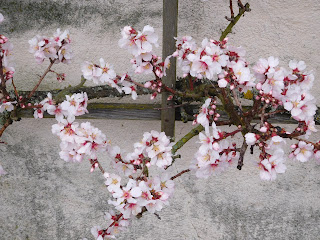














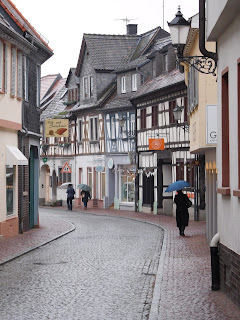




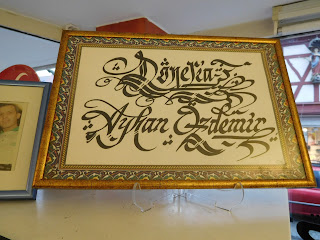
I like the paintings of the German countryside. They look just how I remember it.
ReplyDelete